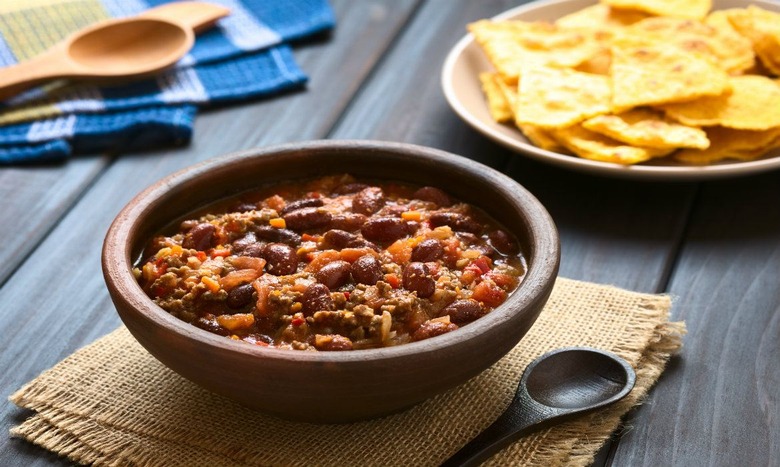You're Making Chili All Wrong, Here's Why
Chili takes time. We all like a good shortcut, but when it comes to crafting the perfect chili, it's always best to just let it simmer.
Whether you prefer to fill your bowl with Texas white chili, Cincinnati Skyline chili, or chili con carne, remember that there is really no substitute for time when it comes to developing rich flavors.
For the Chili Wars: 10 Chili Recipes from Every Region slideshow.
The first step to producing that intense flavor profile we have come to expect with chili is browning everything. By doing this we can capitalize on caramelized flavors developed through Maillard reactions.
What is a Maillard reaction? According to the Modernist Cuisine, it is "one of the most important flavor-producing reactions in cooking," and specifically, it is the reaction between amino acids (proteins) and reducing sugars (caramelization). It results in the sear marks on a well-cooked steak or the crispy browned exterior of roasted vegetables. Just brown everything. Meat. Vegetables. Everything.
Spice mixes simplify things, but they won't help you achieve layers of delicious spicy, sweet, and umami flavor. Instead, add spices one at a time allowing them time to infuse, blend, and develop intense flavor before you add the next batch. Additionally, when it comes to garlic there really is no reason not to use fresh minced instead of powdered, and remember to sauté the garlic.
Start the seasoning process at the beginning of the cooking process, not just before serving. Season as you brown the meat, add the vegetables, and then adjust the seasoning to your taste as you simmer for the best results.
Chili-making is an art, and while there is no one way to make chili, these basic rules will ensure you produce the best tasting bowl possible every time.
Angela Carlos is the Cook Editor at The Daily Meal. Find her on Twitter and tweet @angelaccarlos.
